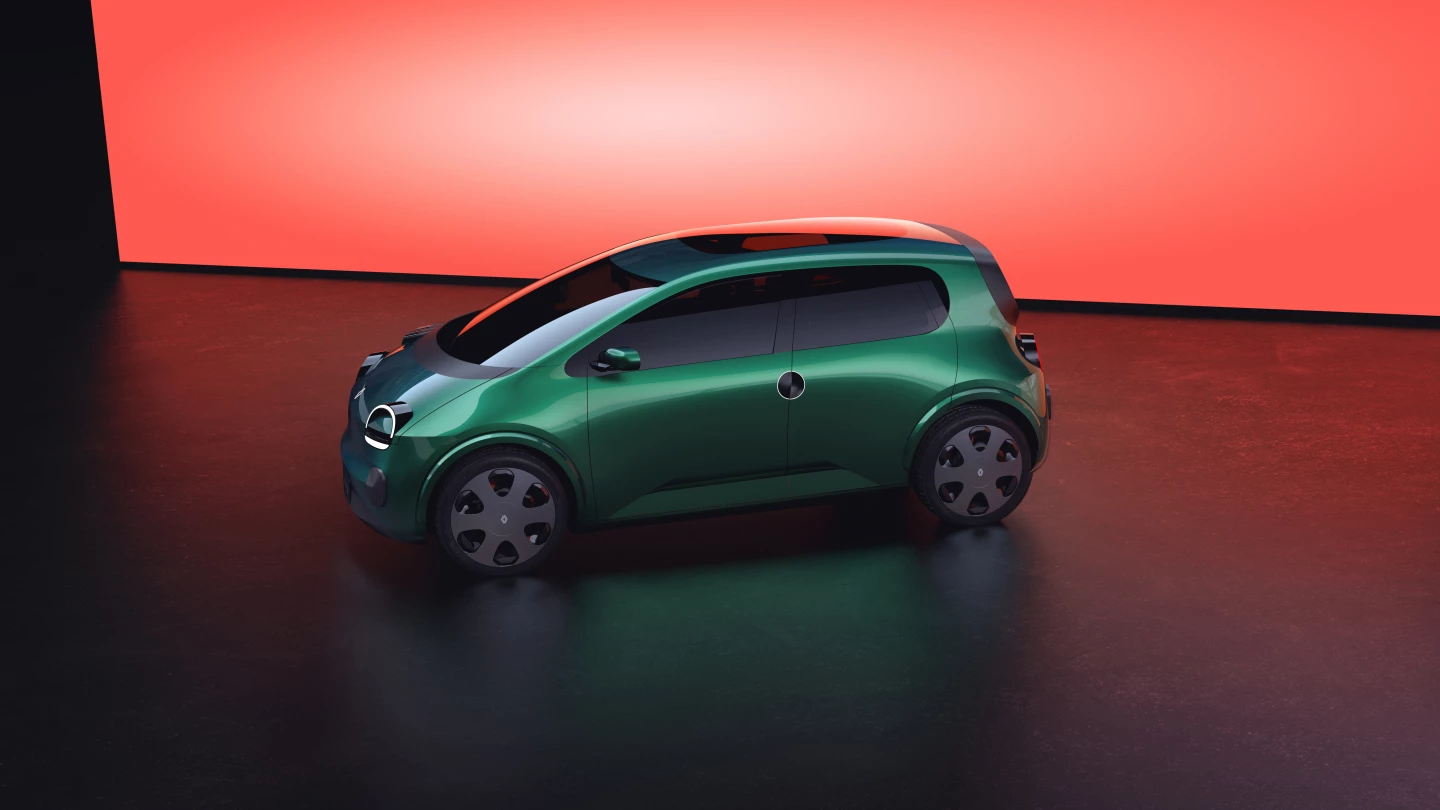Here's an early look at one of the future's cheapest electric vehicles. Renault officially kicks off the Twingo's next generation with an all-electric prototype debuting at next week's 2024 Paris Motor Show. The endearing little hatchback features a revamped design that smashes together the past and present into an optimistic mini-hatch with a digital twist (and swing and tango, too).
With a base price of just €16,900 (approx. US$18,550), the Spring from Renault brand Dacia has been making headlines all year for debuting as Europe's cheapest all-electric vehicle ... at least one that qualifies as an actual passenger car, not an electric quadracycle. Renault looks to add the new Twingo to that rare under-€20,000 (US$22,000) segment in roughly two years' time, with the promise it will be one of Europe's cheapest EVs right alongside the Spring.
Renault actually held a low-key private debut for the new Twingo E-Tech prototype back in November of 2023, but this year's Paris Motor Show will serve as the backdrop of the prototype's more official public world premiere. The automaker gives the Twingo nameplate a thorough reimagining meant to blend the past with the present.

The original Twingo debuted in 1992, designed to instill a new sense of joy and personality into the oft-mundane act of daily driving. The E-Tech prototype looks to renew that original spirit for the electric age, flashing a downright cheerful disposition conveyed by bright, hopeful LED eyes and the slight upward smile of its front bumper crease. The horseshoe-shaped taillights lend an equally fun, youthful parting shot, albeit one that's underlined by a straighter bumper line.
The new design language also ties into the original Twingo via an A-pillar that's barely steeper than the hood, creating a long, continuous look from headlamp to roof. The short hood and overhangs and near-vertical hatchback, meanwhile, result in a roofline that, from some angles, belies the car's tiny packaging.

Renault keeps the retro love going with a number of other cues, none more conspicuous than the three vented bumps on the passenger side of the hood – the automaker admits these have no purpose in an electric car design and are just there as a nod to Twingo heritage. Moving back, the front and rear door handles are located centrally, as on gen-1 Twingos, this time highlighted by an illuminated surround. Up high, the optional fabric sunroof of Twingos past gets replaced, at least on the E-Tech show car, with a more modern glass roof responsible for letting daylight in.
The new Twingo E-Tech is quite an endearing little mini-car at first glance, and if Renault can get it to market at the proposed sub-€20,000 price, it could become a cult classic for the electric age. The automaker considers the new model a key part of its greater plan to put electric mobility within the grasp of more buyers.

Renault launched its first all-electric Twingo, the Twingo Z.E. (E-Tech in some markets) in 2020. That little five-door comes powered by an 82-hp electric motor and 22-kWh battery pack teaming for a modest mixed range of 125 miles (215 km) in Eco mode. Renault has not yet revealed any technical details about the new E-Tech's powertrain, running gear or performance, but its talk of a sub-€20K price means the next-gen E-Tech should actually drop in price from the Z.E., which currently starts at €21,500 in France, after a €4,000 ecological incentive from the French government.
Renault plans to get the Twingo E-Tech to market by 2026. Perhaps it will provide more info about the car's targeted specs at the Paris Motor Show, which opens to the press on Monday, October 14.
Source: Renault













